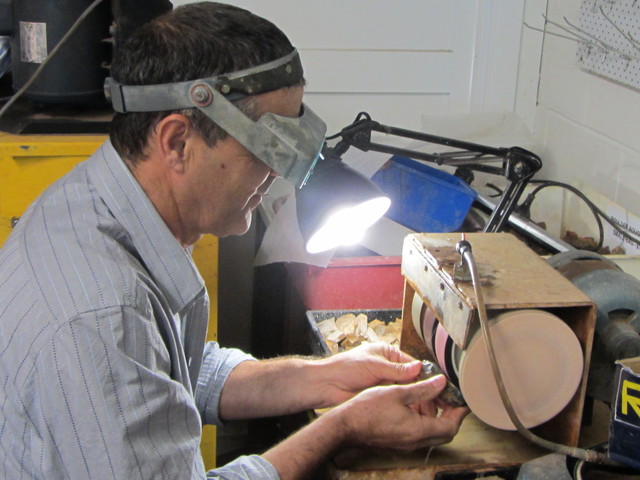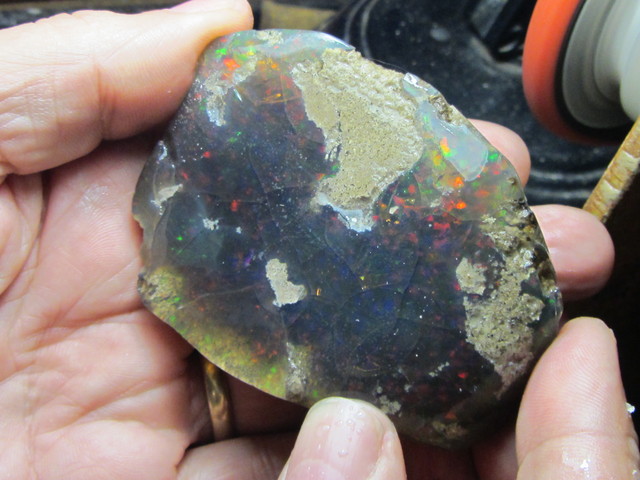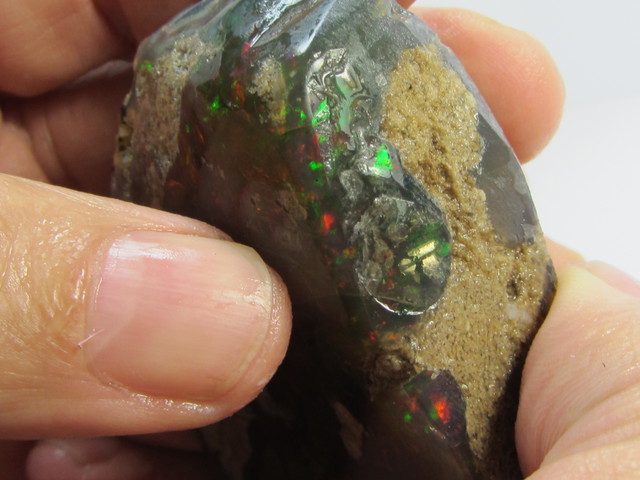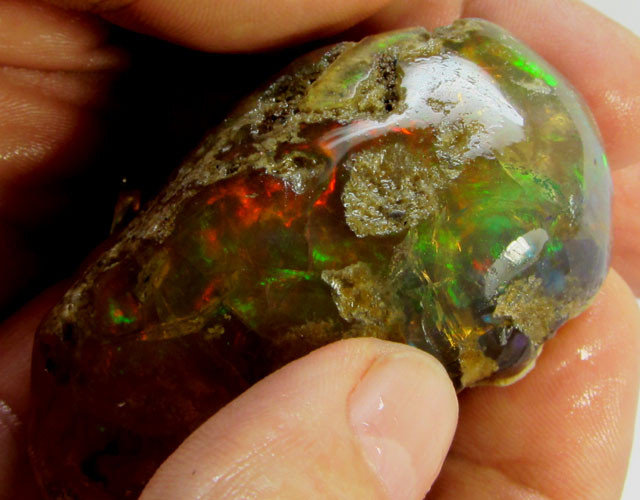
Pubblicato il 27th Apr 2020
Modificato il 17th Nov 2025
Come tagliare l'opale etiope
L'opale etiope viene tagliato e lucidato con un metodo simile a quello della maggior parte degli altri opali provenienti da tutto il mondo. Imparare a tagliare l'opale etiope è semplice come tagliare la maggior parte degli altri opali, ma con un'eccezione. L'eccezione deriva dal fatto che l'opale etiope è idrofane, ovvero assorbe l'acqua. Pertanto, è necessario prestare maggiore attenzione alla selezione e alla selezione del grezzo etiope.




Prima di tagliare l'opale etiope
Tutti gli opali grezzi etiopi devono essere sottoposti a test di frattura prima di essere tagliati e lucidati, altrimenti si rischia di tagliare nuovamente la pietra con delle crepe.
Un metodo popolare è quello di utilizzare un oggetto metallico smussato, come un cacciavite con la punta smussata, e di picchiettare con un martello di gomma sulle aree sospette. Questo provocherà una scheggiatura nel punto più debole della crepa. Potreste ritrovarvi con diversi pezzi, ma dopo questo passaggio dovrebbero essere stabili.
Un altro metodo è il trattamento dell'acqua. Aggiungendo acqua fredda a quella calda è possibile esporre le crepe e assicurarsi che l'opale si asciughi completamente.
Si noti che sottoporre a test di frattura le pietre preziose e gli opali è una pratica comune da secoli. Tutti i principali centri di lavorazione del mondo sottoponevano le rocce a test di frattura prima di lavorarle così come sono, e tagliare una pietra richiedeva molto tempo, quindi volevano essere sicuri di averne una stabile.




Come tagliare l'opale etiope
- Fissa l'opale sul bastoncino di dop usando la colla. È meglio che scaldare la cera da gioielliere per l'opale etiope.
- Durante il taglio utilizzare quanta più acqua possibile
- Non esercitare una pressione eccessiva, lasciati guidare dall'Opale
- Modella e lucida l'opale etiope e goditi lo spettacolo dei colori dopo aver terminato la lucidatura
- Dopo il taglio, lasciare asciugare l'opale in un luogo caldo.




Alcuni suggeriscono di tagliare l'opale etiope a secco, ma si ottengono risultati migliori tagliandolo con acqua.
ACQUISTA OPALE GREZZO ETIOPE
Cerca il Opal Encyclopedia
Aste correlate
articoli Correlati
L'opale bianco o opale di latte è una preziosa varietà di opale che si trova nell'Australia meridionale. Scopri di più su questa splendida varietà di opale e sui famosi giacimenti da cui proviene.
10th Jul 2018
Avete mai visto un opale di fuoco messicano e i suoi incredibili colori? Lasciate che vi raccontiamo la gamma di colori mozzafiato che si possono trovare in un opale di fuoco messicano.
9th Apr 2018
Articoli Recenti
Gli opali neri sono la varietà di opale più ricercata, con basi profonde che conferiscono un arcobaleno di riflessi alla superficie. Scopri gli usi, le proprietà, la storia e il valore degli opali neri!
7th Dec 2025
Scopri come vengono classificati gli opali e quali fattori ne influenzano il prezzo. Dal colore alla brillantezza, dal taglio all'origine, scopri come viene valutato ogni tipo di opale, con esempi di fasce di prezzo.
19th Jul 2023
Venite a scoprire il potere curativo degli opali con la nostra scrittrice ospite Vivien Schapera di Crystal Healing Techniques!
20th May 2023
Categorie di articoli
All there is to know about Opals including Black Opals, Ethiopian Opals & Boulder Opal
14 Articoli
Check out our fascinating information and articles on all things amazing in the Opal world
41 Articoli
Opal Auctions sellers who are approved as opal Verified Sellers
4 Articoli





